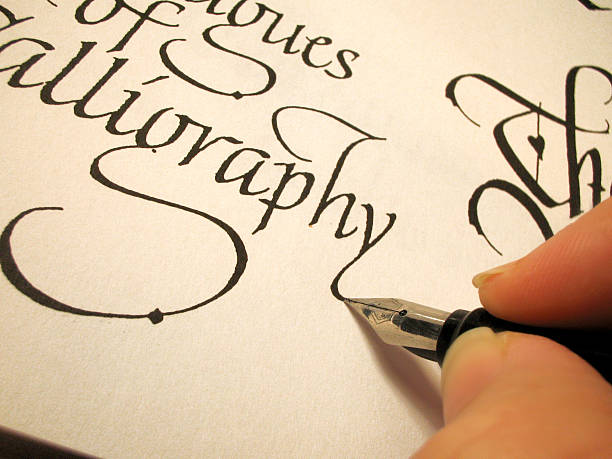how to start a small calligraphy business from home
The ancient art of calligraphy has experienced a remarkable renaissance. From wedding invitations to corporate branding, beautiful hand-lettered designs are in high demand. This surge in popularity presents an incredible opportunity for creative individuals to transform their calligraphy skills into a thriving home-based business.
Starting a calligraphy business from home offers unique advantages that traditional businesses can’t match. With minimal startup costs, flexible scheduling, and the ability to work directly with clients, you can build a profitable venture while pursuing your artistic passion. Whether you’re a stay-at-home parent seeking additional income or a creative professional looking to monetize your hobby, the calligraphy industry welcomes entrepreneurs at every level.
The beauty of a home-based calligraphy business lies in its scalability. You can begin with simple projects like greeting cards or place cards, then expand into wedding suites, corporate branding, or even online courses. The global reach of digital platforms means your potential customer base extends far beyond your local community.
This comprehensive guide will walk you through every aspect of launching your calligraphy business, from developing your unique style to managing legal considerations. By the end, you’ll have a clear roadmap to transform your artistic talents into a sustainable income stream.
Finding Your Signature Calligraphy Style
Your artistic voice sets you apart in a competitive market. While mastering traditional calligraphy styles like Copperplate, Spencerian, or Italic provides a solid foundation, developing your unique aesthetic is crucial for business success.
Start by exploring different calligraphy styles through practice and experimentation. Study the work of established calligraphers like Laura Hooper, known for her elegant wedding designs, or Written Word Calligraphy, which specializes in clean, modern aesthetics. Notice how successful businesses blend traditional techniques with contemporary flair.
Consider your target market when developing your style. Romantic, flowing scripts appeal to wedding clients, while bold, geometric lettering attracts corporate customers. Your personal preferences matter too—you’ll produce your best work when you’re genuinely excited about the projects you’re creating.
Document your style development through a portfolio that showcases your range and consistency. Include various project types, from intimate invitation suites to large-scale signage. This portfolio becomes your most powerful marketing tool, demonstrating your capabilities to potential clients.
Remember that style evolution is ongoing. As you gain experience and confidence, your work will naturally develop sophistication and personality. Embrace this growth while maintaining the core elements that make your work recognizable.
Essential Calligraphy Supplies for Your Business
Quality tools are the foundation of professional calligraphy work. While you don’t need to invest in the most expensive supplies immediately, choosing reliable, consistent materials ensures your work meets professional standards.
Pens and Nibs: Start with a good oblique pen holder and a selection of nibs in different sizes. Popular choices include Nikko G nibs for beginners and Hunt 101 for fine detail work. Consider fountain pens with calligraphy nibs for consistent ink flow.
Inks: Invest in high-quality, permanent inks that won’t fade or bleed. Sumi ink offers rich black tones, while gouache provides vibrant colors. For wedding work, consider metallic inks that photograph beautifully.
Paper: Stock various paper types including practice paper, high-quality stationery, and specialty papers for finished pieces. Rhodia pads work well for practice, while cotton papers like Crane & Co. elevate finished projects.
Guidelines and Tools: Lightboxes, rulers, and guideline generators help maintain consistent letter spacing and alignment. These tools are essential for professional-quality work.
Additional Supplies: Include pencils for initial layouts, erasers, blotting paper, and storage solutions for your growing collection of materials.
Budget approximately $200-500 for your initial supply investment. As your business grows, you can expand your collection with specialized tools and premium materials.
Setting Up Your Home Calligraphy Studio
Your workspace significantly impacts both your productivity and the quality of your work. Creating an efficient, inspiring environment doesn’t require a dedicated room—a well-organized corner can suffice.
Lighting: Natural light is ideal for color accuracy, but supplement with a high-quality desk lamp for evening work. LED lights with adjustable color temperature reduce eye strain during long projects.
Seating and Posture: Invest in an ergonomic chair and adjustable desk height. Calligraphy requires precise hand control, which becomes difficult when you’re uncomfortable.
Storage Solutions: Organize supplies with drawer dividers, pegboards, and storage containers. Easy access to materials keeps you focused on creative work rather than hunting for tools.
Work Surface: A smooth, stable surface is essential. Consider a light table for tracing work or a drafting table with adjustable angles for comfort.
Inspiration Board: Display client work, color palettes, and inspirational pieces to keep your creative energy flowing.
Your studio should feel both professional and personally inspiring. This space represents your business, so invest in creating an environment that motivates excellent work.
Calligraphy Pricing Strategies That Work

Pricing calligraphy services requires balancing fair compensation for your time and skills with market competitiveness. Many new calligraphers undervalue their work, which hurts both their business and the industry overall.
Hourly Rates: Calculate your desired annual income, factor in business expenses and taxes, then determine an hourly rate. Beginning calligraphers often start at $25-40 per hour, while experienced professionals command $75-150 per hour.
Project-Based Pricing: Many clients prefer fixed pricing for defined projects. Wedding invitation suites might range from $3-8 per invitation, depending on complexity and local market rates.
Value-Based Pricing: For unique projects or rush orders, price based on the value you provide rather than time invested. A logo design might take four hours but provide years of branding value.
Pricing Tiers: Offer different service levels—basic, premium, and luxury—with corresponding price points. This approach captures various budget ranges while encouraging upgrades.
Research your local market through competitor analysis and client surveys. Don’t compete solely on price; emphasize quality, service, and unique style elements that justify premium rates.
Consider offering package deals for comprehensive projects like wedding stationery suites, which increase your average order value while simplifying the decision process for clients.
Marketing Your Home-Based Calligraphy Business

Effective marketing transforms your artistic skills into consistent income. Focus on channels where your target audience spends time and where visual content performs well.
Social Media Marketing: Instagram and Pinterest are essential platforms for calligraphers. Share high-quality photos of your work, behind-the-scenes process videos, and client testimonials. Use relevant hashtags like #calligraphy, #handlettering, and location-specific tags to increase visibility.
Content Marketing: Start a blog featuring calligraphy tutorials, client spotlights, and industry insights. This content improves search engine visibility while establishing your expertise. Share before-and-after project photos and explain your creative process.
Email Marketing: Build an email list through free resources like practice sheets or style guides. Regular newsletters keep you connected with potential clients and encourage repeat business from past customers.
Online Marketplaces: Platforms like Etsy and Creative Market provide immediate access to customers seeking calligraphy services. While fees reduce profit margins, these platforms handle payment processing and provide built-in traffic.
Local Networking: Participate in craft fairs, wedding expos, and community events. Build relationships with wedding planners, photographers, and event coordinators who can provide referrals.
Portfolio Website: Create a professional website showcasing your best work, services, and contact information. Include client testimonials and clear pricing information to streamline the inquiry process.
Successful calligraphy businesses like Pop + Flourish have built thriving communities around their teaching and services. Focus on building genuine relationships rather than just promoting your services.
Legal and Financial Foundations
Proper business structure protects your personal assets and simplifies tax compliance. While legal requirements vary by location, several considerations apply universally.
Business Registration: Choose between sole proprietorship, LLC, or corporation structures. LLCs offer liability protection with simpler tax reporting than corporations, making them popular for small creative businesses.
Licensing and Permits: Research local requirements for home-based businesses. Some areas require business licenses or restrict commercial activities in residential zones.
Copyright Protection: Your original calligraphy designs are automatically copyrighted, but registration provides stronger legal protection. Include copyright notices on your work and consider watermarking digital portfolios.
Client Contracts: Clear agreements prevent misunderstandings and protect both parties. Include project scope, timelines, payment terms, revision policies, and usage rights. Templates are available online but consider legal review for complex projects.
Insurance: General liability insurance protects against accidents or property damage, while professional liability coverage addresses design errors or client disputes. Costs are relatively low compared to potential exposure.
Tax Considerations: Track all business income and expenses for tax reporting. Home office deductions, supply costs, and marketing expenses may be deductible. Consult with a tax professional familiar with creative businesses.
Financial Management: Separate business and personal finances with dedicated bank accounts and credit cards. Use accounting software to track income, expenses, and tax obligations throughout the year.
Growing and Scaling Your Calligraphy Business
Once established, numerous opportunities exist to expand your calligraphy business beyond individual client projects.
Teaching and Workshops: Share your expertise through in-person workshops or online courses. Companies like Brown Paper Parcel have built successful businesses around calligraphy education. Teaching provides recurring income while establishing you as an industry expert.
Digital Products: Create and sell practice sheets, fonts, or design templates through platforms like Creative Market. Digital products generate passive income and reach global audiences.
Wholesale Partnerships: Partner with wedding planners, stationery stores, or event venues to provide calligraphy services for their clients. These relationships provide consistent work volume and professional referrals.
Team Expansion: As demand grows, consider hiring subcontractors or employees to handle overflow work. This approach allows you to take on larger projects while focusing on business development and high-value activities.
Specialization: Develop expertise in specific niches like luxury weddings, corporate branding, or historical document reproduction. Specialization commands premium pricing and reduces competition.
Product Lines: Develop signature products like custom wedding invitations, holiday cards, or art prints. Physical products complement service offerings and provide additional revenue streams.
Track key business metrics like client acquisition cost, lifetime value, and project profitability. This data guides growth decisions and identifies the most profitable aspects of your business.
Frequently Asked Questions
What are the basic supplies I need to start a calligraphy business?
You’ll need calligraphy pens, nibs, high-quality ink, various paper types, guidelines, and practice workbooks. Budget $200-500 for initial supplies, upgrading as your business grows.
How do I price my calligraphy services?
Consider your time, materials, complexity, and market rates. Offer hourly rates ($25-150/hour based on experience), per-project pricing, and value-based pricing for unique work.
How can I protect my calligraphy designs from copyright infringement?
Register original designs with the copyright office, use watermarks on digital work, and include copyright notices. Clear client contracts should specify usage rights and ownership.
What legal structure should I choose for my calligraphy business?
LLCs offer liability protection with simplified tax reporting, making them popular for small creative businesses. Consult with legal and tax professionals for personalized advice.
How do I attract my first clients as a calligrapher?
Build a strong portfolio, leverage social media, offer introductory pricing, network with wedding vendors, and consider friends and family as initial clients who can provide testimonials.
What kind of insurance do I need for my calligraphy business?
General liability insurance protects against accidents, while professional liability coverage addresses design errors. Both are relatively inexpensive compared to potential risks.
How do I handle client contracts and payment terms?
Use clear contracts outlining project scope, timelines, fees, and revision policies. Require deposits before starting work and establish payment schedules for larger projects.
What are the tax implications for my calligraphy business?
Track all income and expenses, pay quarterly estimated taxes, and consider home office deductions. Consult with tax professionals familiar with creative businesses.
How do I handle customer disputes or complaints?
Communicate professionally, address concerns promptly, and refer to your contract terms. Consider mediation for serious disputes and maintain detailed project documentation.
What are the best marketing channels for my calligraphy business?
Instagram and Pinterest showcase visual work effectively. Combine social media with content marketing, email lists, online marketplaces, and local networking for comprehensive reach.
Transform Your Passion Into Profit
Starting a small calligraphy business from home combines artistic fulfillment with entrepreneurial opportunity. The flexibility to set your schedule, work directly with clients, and scale at your own pace makes this venture particularly appealing for creative professionals.
Success requires more than beautiful lettering—you need solid business foundations, effective marketing, and clear pricing strategies. The investment in quality supplies, professional presentation, and legal protection pays dividends through client confidence and business growth.
Your journey begins with a single project. Start small, focus on quality, and build your reputation one satisfied client at a time. The calligraphy market rewards authenticity, consistency, and professionalism.
Take action today by setting up your workspace, ordering essential supplies, and creating your first portfolio pieces. Your calligraphy business awaits—transform your artistic passion into a thriving home-based enterprise.
